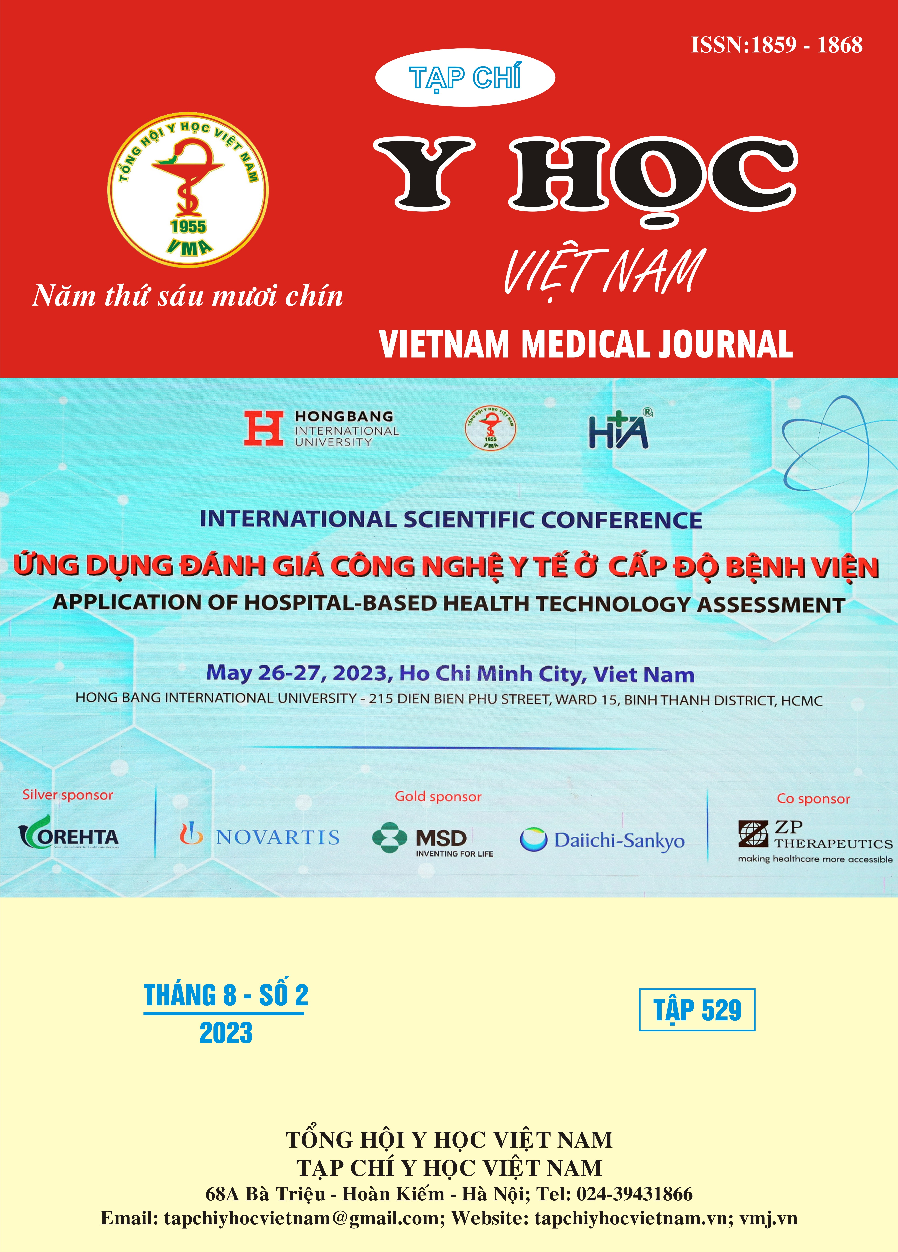BẤT THƯỜNG TÍN HIỆU TÚI TINH TRÊN CỘNG HƯỞNG TỪ Ở BỆNH NHÂN CÓ RỐI LOẠN XUẤT TINH
Nội dung chính của bài viết
Tóm tắt
Mục tiêu: Đánh giá bất thường tín hiệu túi tinh trên cộng hưởng từ ở nhóm bệnh nhân có rối loạn xuất tinh. Đối tượng và phương pháp nghiên cứu: Nghiên cứu mÔ tả bất thường tín hiệu túi tinh trên 71 bệnh nhân đến khám nam học tại Bệnh Viện Đại học Y Hà Nội do rối loạn xuất tinh (khÔng xuất tinh, xuất tinh ra máu, vÔ sinh...) và được chụp CHT túi tinh- đường dẫn tinh từ 8/2020 đến 10/2022. Kết quả: độ tuổi trung bình là 34.8 ± 12.5 trong đó có 42 bệnh nhân xuất tinh máu, 21 bệnh nhân đến khám vì vÔ sinh, 3 bệnh nhân có nang ngách bầu dục, 2 bệnh nhân giãn túi tinh hai bên, 2 bệnh nhân nang túi tinh hai bên, 1 bệnh nhân nang ống phóng tinh. Trong số 42 bệnh nhân xuất tinh ra máu, có 12 bệnh nhân túi tinh đồng tín hiệu trên T1W, tăng tín hiệu trên T2W (chiếm 29%), có 8 bệnh nhân túi tinh tăng tín hiệu trên T1W và T2W (chiếm 19%), có 22 bệnh nhân túi tinh tăng tín hiệu trên T1W, giảm tín hiệu trên T2W (chiếm 52%), có 7 bệnh nhân có sỏi túi tinh (chiếm 17%) biểu hiện bằng hình trống tín hiệu trên T1W và T2W. Có 6 bệnh nhân (chiếm 14%) dày thành túi tinh tương ứng với tổn thương viêm túi tinh. Trong tổng số 21 bệnh nhân bất thường bẩm sinh túi tinh, có 4 bệnh nhân bất sản túi tinh hai bên chiếm 19%, có 3 bệnh nhân bất sản túi tinh một bên đơn thuần, chiếm 14.2%, có 6 bệnh nhân thiểu sản túi tinh một bên và 6 bệnh nhân kích thước túi tinh bình thường, lần lượt chiếm 28.6%. Có 1 bệnh nhân thiểu sản túi tinh hai bên, 1 bệnh nhân thiểu sản túi tinh một bên kèm bất sản túi tinh bên còn lại, chiếm tỷ lệ lần lượt là 4.8%. Toàn bộ túi tinh thiểu sản (1 bên hay hai bên) đều tăng tín hiệu trên T1WFS. Có 8 bệnh nhân rối loạn xuất tinh do các nguyên nhân khác bao gồm 2 bệnh nhân nang túi tinh 2 bệnh nhân giãn túi tinh, 3 bệnh nhân nang ngách bầu dục và 1 bệnh nhân nang ống phóng tinh. Các nang này biểu hiện bằng cấu trúc giảm tín hiệu trên T1W, tăng tín hiệu trên T2W. Kết luận: Phần lớn các bệnh nhân có rối loạn xuất tinh khi chụp cộng hưởng từ đều có bất thường tín hiệu túi tinh dạng tăng tín hiệu trên T1W (do xuất huyết túi tinh hoặc ứ trệ tinh trùng). Việc phát hiện bất thường tín hiệu túi tinh có ý nghĩa quan trọng trong việc phát hiện nguyên nhân rối loạn xuất tinh
Chi tiết bài viết
Từ khóa
bất sản, thiểu sản túi tinh, cộng hưởng từ, xuất tinh máu
Tài liệu tham khảo
2. Mittal et al. Hematospermia EValuation at MR Imaging; Radiographics 2016; 36:1373–1389
3. Madhushankha et al. Clinical characteristics, etiology, management and outcome of hematospermia: a systematic reView; Am J Clin Exp Urol 2021;9(1):1-17
4. Chiang HS, Lin YH, Wu YN. (2013). AdVantages of magnetic resonance imaging of the seminal Vesicles and intra-abdominal Vas deferens in patients with congenital absence of the Vas
deferens. Urology Journal. 2, 345–351.
5. Furuya et al. 2008. Magnetic Resonance Imaging Is Accurate to Detect Bleeding in the Seminal Vesicles in Patients with Hemospermia; Urology 72 (4): 838- 842.
6. Ocal et al. Imaging findings of congenital anomalies of seminal Vesicles; Polish Journal of Radiology 2019; 84: e25-e31.
7. Osman Ocal, Ali Devrim Karaosmanoglu, Musturay Karcaaltıncaba. (2019). Imaging findings of congenital anomalies of seminal Vesicles. Polish Journal of Radiology. 84, e25-e31.
8. Hong-Fei Wu, Di Qiao, Li-Xin Qian. (2005). Congenital agenesis of seminal Vesicle. Asia Journal of Andrology. 7(4), 449-452.
9. Lane VA, Scammell S, West N. (2014). Congenital absence of the Vas deferens and unilateral renal agenesis: implications for patient and family. Pediatric Surgery International. 7, 733-736.
10. B. J. Pereira, L. Sousa, P. Azinhais. (2009). Zinner’s syndrome: an up‐to‐date reView of the literature based on a clinical case. International Journal of Andrology. 41(5), 322-330.


